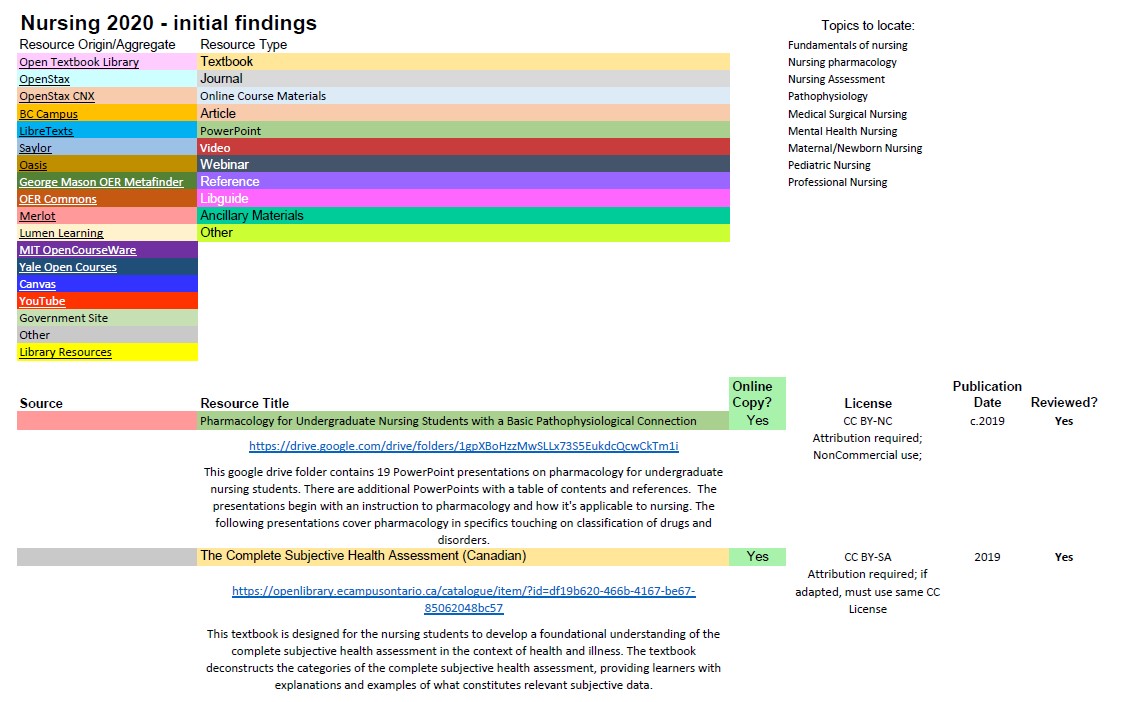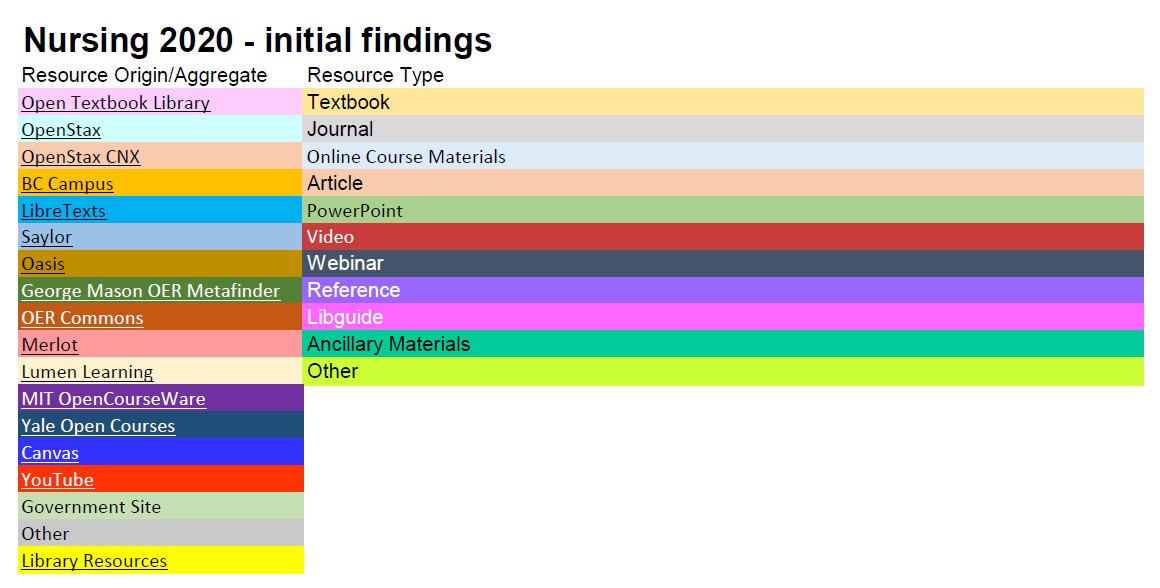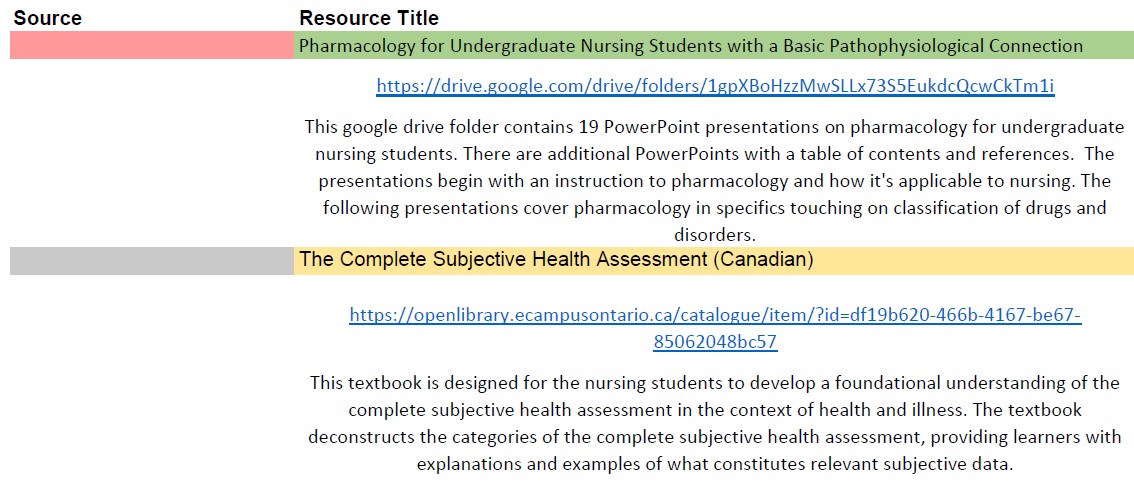6 OER Searching
This section outlines current searching and documentation strategies for Archives and Educational Initiatives staff in Library Services at Salt Lake Community College (SLCC) to follow.
Requests
Faculty are referred to the Archives, New Media and Educational Initiatives Librarian when they would like assistance with locating potential OER for their courses.
After the request is received, the Archives, New Media and Educational Initiatives Librarian works with the Faculty member(s) to clarify the topics they would like covered as well as the formats and types of OER they are looking for.
This information is then utilized by Archives and Educational Initiatives staff in Library Services to perform OER research round.
OER Research Spreadsheet
Currently, Archives and Educational Initiatives staff in Library Services use a pre-defined spreadsheet to record the results of OER searches performed for SLCC Faculty (and Staff).
Title + Resource Origin/Aggregate and Resource Type Legend
An example of the first section of such a spreadsheet can be seen below.

In the upper left of the spreadsheet we record the title of the course or area of study for which the OER research is being performed.
Under that, there is a column for Resource Origin/Aggregate. This column is color-coded and each identified Resource Origin/Aggregate is hyperlinked to facilitate easier searching. The Resource Origin/Aggregates are also listed in the order in which we typically perform the searching (shown below).

Source and Resource Title Fields
Next is the Resource Type column which contains another color-coded list of Resource Types.
The color coding is used in main body of the spreadsheet to denote the resource origin/aggregate and resource type for each OER record. For example, the color-coding in first entry from this spreadsheet (shown below) denotes that the identified OER was located using Merlot and it is a PowerPoint (or in this case, multiple PowerPoint files).

In the second entry the color-coding denotes that the identified OER was located via an “other” search strategy and it is a textbook.
Online Copy, License, Publication Date, and Reviewed Columns
The “Online Copy?” field is typically left in it’s color-coded green with no text. However, if there are specifications, such as “PDF only” that you feel would be useful to the faculty member reviewing this spreadsheet, please feel free to include such information.
This is followed by the Licensing information (Creative Commons or Copyrighted) with additional clarification for the faculty member.
A Publication Date is included – either the date, a circa date, or “N.D.” for no date.
Finally, if the OER has been peer-reviewed or reviewed within one of the OER search engines/aggregates, then that determines if the value is “No” or “Yes.”


